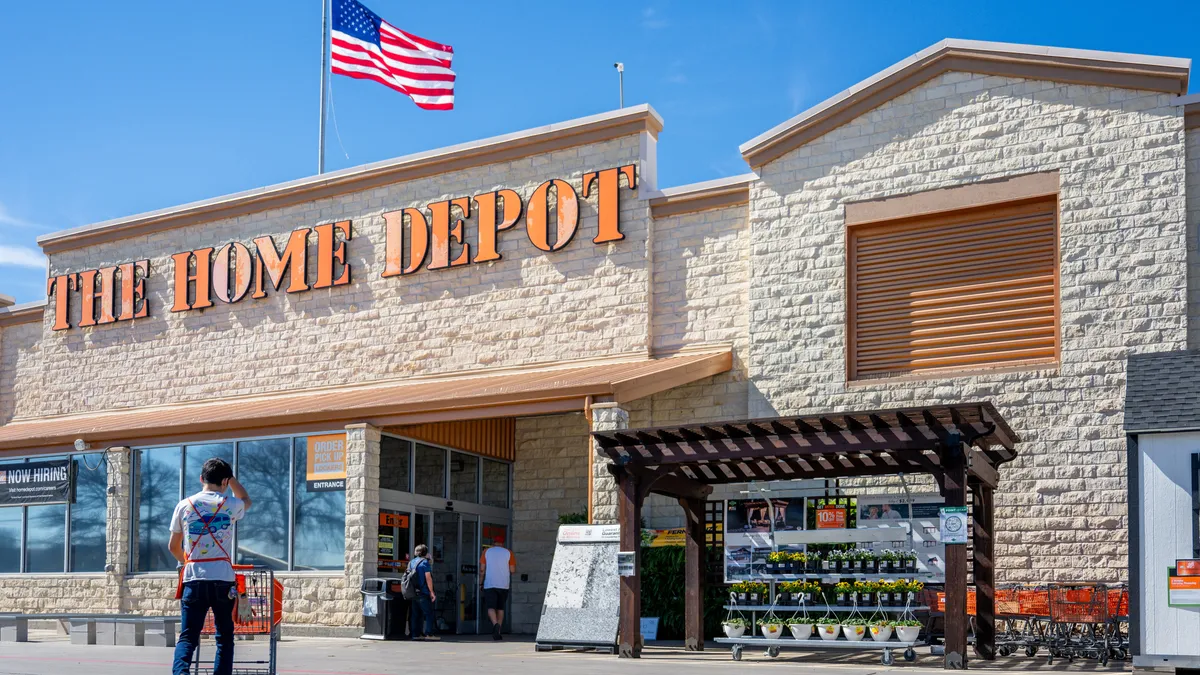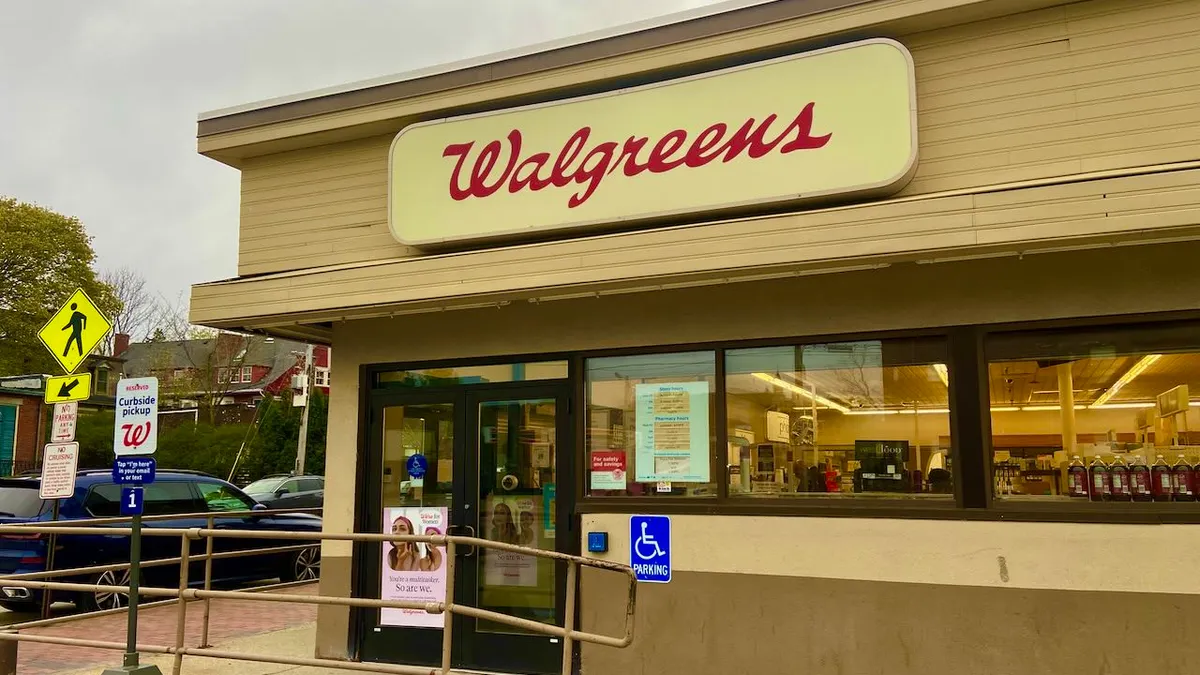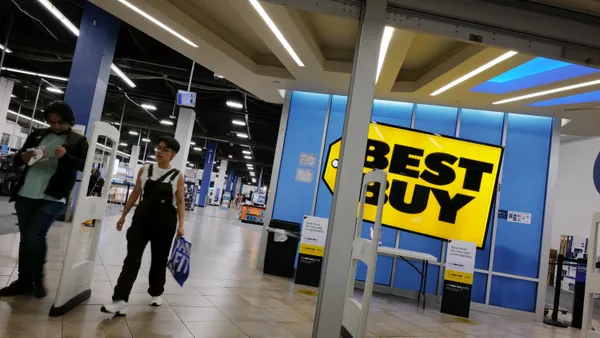It's been a banner year for store closing sales.
At first, that didn't seem likely. While retail closures were rife in 2017, that "slowed considerably in 2018," according to a Credit Suisse note updating its store closure index. But things have picked up again this year, and the firm has recorded the highest number "at this point in the year for any year" in the index's 24-year history: 7,600.
"Our updated Credit Suisse US Retail Store Closure Index supports our view that large scale store closures are going to be a challenge for the industry for several years to come," analyst Michael Binetti wrote in the Oct. 8 client note. "We expect elevated closures to remain a primary operational distraction and stock risk for the US retail space for several years."
Retailers are opening stores, too, but closures are outpacing openings twofold, with closure announcements earlier this year already surpassing last year, according to Coresight Research. BDO analysts in September had also counted more than 7,000 closures, more than any other full year.
Too many (apparel) stores
As Credit Suisse analysts note, Forever 21, which is in bankruptcy right now, is the latest retailer to announce mass closures — the company says it will shutter as many as 178 of its 541 U.S. stores (though that total may get closer to 88). That announcement, according to another note from B. Riley, reflects the fact that "most retailers have too many stores and need to further rationalize their fleets."
Indeed, it's not just Forever 21. "The biggest problem in retail today is that there really are too many stores in the United States," states Matt Powell, a senior industry advisor at The NPD Group, in a video on the industry. "We have over 23 square feet of retail square footage for every man, woman and child in the United States. We look at other developed countries like Germany and they have four or five square feet."
Such numbers are found in PwC research last year finding that the U.S. has 24 square feet of retail space per capita, compared to 16 in Canada, five in the U.K. and four in France. "Nearly 1 billion square feet ... might well need to be shuttered, repurposed, or renegotiated for lower rent," PwC researchers said in the report, which was emailed to Retail Dive.
"There's a trend away from durable clothing to disposable clothing and that is a movement affecting the likes of Nordstrom."

Nick Egelanian
President of SiteWorks
Apparel stores like Forever 21 are particularly vulnerable. E-commerce is a factor driving down foot traffic, but the apparel segment is also under pressure because shoppers are buying less of it, with less need for more formal attire and more desire to consume other things. Department stores, which have essentially become apparel retailers as they've slashed other assortments, are caught up in the problem along with specialty players.
"Apparel is very complex. Thirty-five percent of apparel sales are happening online and it continues to grow 3% to 4% a year," Nick Egelanian, president of retail real estate development firm SiteWorks, told Retail Dive in an interview. "It's the end of the mall era, which is killing one group of retailers, and oversupply and the proliferation of TJX [off-price] stores, which is killing the cheap end of the business. There's a trend away from durable clothing to disposable clothing and that is a movement affecting the likes of Nordstrom. Quite a lot of people think Nordstrom will end up with 80 to 90 stores from the 120 they are now."
It's not just Nordstrom. Credit Suisse analysts in their note say that Macy's, J.C. Penney, L Brands and Gap Inc. "could be most at risk" for downsizing next year. "While retailers tend to resist closing stores at all costs, we think it's going to be increasingly tough for Softlines retailers to justify keeping underperforming stores open, and wouldn't be surprised to see another large-scale round of closure announcements in early 2020," they said.
How many stores?
That begs the Goldilocks question: How many stores is too many — or even too few — and how many is "just right"?
It's a question bedeviling all retailers, but especially those, like Madewell, that are especially keen on growth. That retailer, which is set to be spun off by parent J. Crew and simultaneously go public, has stoked a brick-and-mortar expansion it says is key to its success. The parent company operates 192 J.Crew stores, 133 Madewell stores and 172 factory stores, and plans are to open 10 more Madewell stores during this fiscal year alone, according to a September Securities and Exchange Commission filing.
That's a plan forged in denial, according to Lee Peterson, executive vice president of thought leadership and marketing at WD Partners. In the past, retailers would agree to open stores in B or C malls in order to obtain a lease with a developer's A mall. But declining mall traffic, especially in those lesser locations, has destroyed the appeal of that approach. Even mall stalwarts like Gap are abandoning it in favor of more convenient strip-style centers plus e-commerce.
"What the retailer is going for is to have the optimal number of stores that maximizes the performance of each store — the net cost to build the store, net cost to operate the store, net cost of the goods in the store — for a certain threshold return on investment."

Nick Egelanian
President of SiteWorks
Madewell is about to make the same mistake as American Apparel, a retailer whose infamous demise is often blamed on the antics of its controversial founder, but probably had as much to do with its overexpansion, according to Peterson.
"Madewell already has 130 stores, there's not going to be growth," he told Retail Dive in an interview. "They said something like, 'We're going to have 500 stores.' Where?! You are not! If you get to 150 stores, I would not advise to go over that. And you should really think about your strategy at 75 because even 100 stores is a lot of stores now. You're going to start to really push it by going over 100."
It comes down to an imperfect set of calculations, according to Egelanian, who says it's helped somewhat by technologies, like geofencing, that track traffic. "What the retailer is going for is to have the optimal number of stores that maximizes the performance of each store — the net cost to build the store, net cost to operate the store, net cost of the goods in the store — for a certain threshold return on investment. Some are better at it than others. The commodity retailers and retailers like TJX are the best at it because they already know a lot about their customers even without geofencing."
The biggest challenge is faced by specialty retailers, he said, especially in an era where the mall has become "archaic."
"They're dependent on the overall tenant mix — Walmart isn't dependent on the other guys, while Williams Sonoma is very dependent," he said, noting that, while a Walmart store has maybe a 2% chance of failure to perform against expectations, for others it's 50/50. "There are so many more errors on store count and store placement on that side of the business because there's a combined set of variables that are really hard to get right. The two things that most don't know how to factor in is the impact of place and the quality of the venue. What it feels like to be in it."
Start figuring it out, is what NPD's Powell might say. Rather than opening stores (perhaps aside from the direct-to-consumer digital natives that have few or none), retailers should be strategically contemplating closing them as part of a five-year "ruthless rationalization" plan that pares down 20% to 25% of the fleet, according to Powell. Stores that stay open should be "actually making a decent profit" and provide customers with an elevated experience, which he said includes a "fun" environment with attentive associates "who are able to express why the products are in the store and why they're meaningful to the consumer."
Just right
That appears to be the approach at Best Buy. The electronics retailer has trimmed about 100 big-box locations in the last decade or so, from "just under 980," with 18 closing in recent weeks, taking advantage of lease renewals to reevaluate its footprint, according to a recent report from the Minneapolis Star-Tribune. The retailer also shuttered all of its nearly 260 stand-alone mobile stores last year. Still, Mike Mohan, president and chief operating officer, at the company's annual investor conference in September, called stores "vital to our strategy."
"Our stores play multiple powerful roles," he said, per a Seeking Alpha transcript. "Every one of our stores acts as a hub where we can ship products, customers can pick up products, customers can get products serviced, and they are the premier place to demonstrate technology solutions that meet customers' needs."
As the industry corrects for its profligate buildup of brick and mortar and adjusts for the ongoing rise of e-commerce, however, it's important to realize how essential the physical channel is, according to Amir Zwickel, co-founder and chief real estate officer at Showfields, a four-story, 14,707-square-foot building in New York City's NoHo shopping district that provides (mostly, but not only) digital native brands with what is sometimes their first physical space. Showfields offers purposeful, compelling experiences for customers and practical flexibility for brands that are hard to find in traditional retail settings — but that could be possible anywhere, he said.
"If 10 years ago every brand needed to understand that they needed a website and five years ago every brand needed to have e-commerce, every brand today needs to understand that they do need a phyiscal touchpoint," he told Retail Dive in an interview. "We all understand that one is not ideal without the other."





















